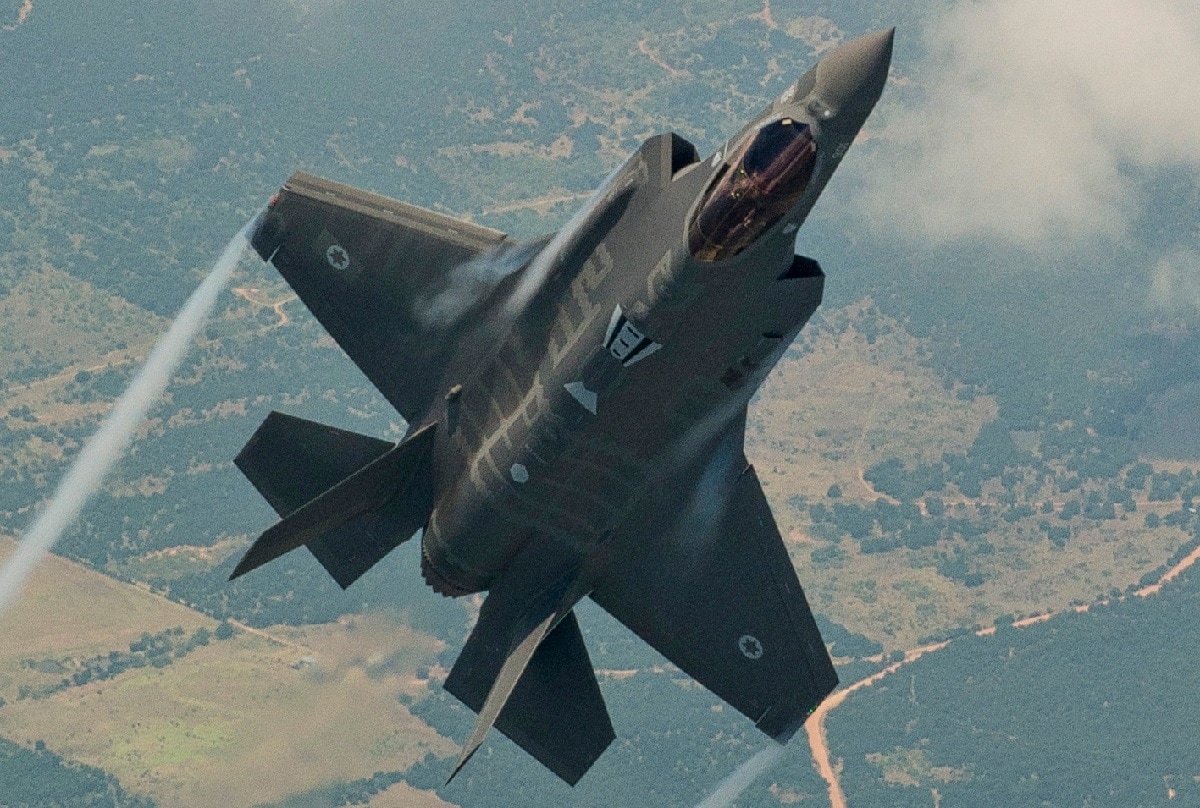Should Israeli Prime Minister Benjamin Netanyahu or another future prime minister choose to strike Iranian nuclear or other defense sites, Israel’s derivative of Lockheed Martin’s F-35 likely would be the tip of the spear.
Meet the F-35I Adir
Israeli aviation and defense industries have a knack for enhancing existing weapons platforms. Israel’s F-35I Adir (“Mighty One”) variant is just the latest example. The first F-35s delivered to Israel were the American F-35A variant. It has extended range that would allow it to hit targets inside Iran without refueling. The stealth jet can carry a one-ton bomb in its internal weapons bay without compromising its stealth signature.
Israel received its first F-35I in 2016 and has two squadrons, the second being established in 2020. It will have a total of 50 F-35s by 2024, including 31 of the F-35I variant.
Weapons planned for the Israeli F-35I fleet include the Rafael SPICE precision bomb, possibly the 2000-lb. variant. It is resistant to jamming and is independent of GPS availability.
The F-35A has a declared range of 650 nautical miles, which means the plane has little chance of taking off from Israeli bases and making it much beyond Iran’s western border without significant modifications.
The F-35I is a derivative of the F-35A that uses domestic Israeli customizations. Israel Aerospace Industries (IAI) and Cyclone, a subsidiary of Israeli defense firm Elbit Systems, have worked on developing a conformal external fuel tank design for the plane and a 600-gallon drop tank. The Israelis could also be working on modifications to the engines and software to improve the plane’s range.
These include an Israeli developed electronic warfare system, sensors, weaponry, and communications systems that allow for real-time two-day data flow. The F-35I also uses an Israel Air Force-tailored helmet-mounted display.
F-35I In Action
Last May, the Israel Air Force carried out a series of maneuvers aimed at practicing skills and tactics needed to strike Iran as part of its Chariots of Fire war drill. Israeli F-35s successfully penetrated Iranian airspace during the exercise without being detected. The jets also successfully evaded detection by Russian and Iranian radars during the exercise. Israeli jets carried out strikes in the Mediterranean that simulated attacks on Iranian nuclear facilities.
They also practiced coordinating activities between the fifth generation F-35Is and conventional fourth generation F-15s and F-16s using their networking abilities. The jets shared intelligence, missions, etc.
F-35Is shot down two Iranian drones launched toward Israeli territory last year. These drones are viewed as the primary means of Iranian aggression across the region.
F-35Is participated in this year’s Red Flag exercise at Nellis Air Force Base in Nevada last month.
It provided the Israelis with an opportunity to showcase the capabilities of their upgraded F-35s in combat exercises with the U.S. Air Force’s aggressor squadron.
“The Israeli F-35 participation in Red Flag 23-2 is another step forward for America and its allies in the transition to the next level of air warfare,” Col. Jared Hutchinson, 414th Combat Training Squadron commander, said in a statement. “It’s a rare opportunity for warfighters from both countries to integrate our most advanced capabilities. As the Fifth-Generation Center of Excellence, Nellis AFB is uniquely capable of hosting allied F-35 units on the ground and challenging them in the air.”
MORE: The F-35 Now Comes in Beast Mode
MORE: Why the U.S. Navy Tried to Sink Their Own Aircraft Carrier
John Rossomando is a senior analyst for Defense Policy and served as Senior Analyst for Counterterrorism at The Investigative Project on Terrorism for eight years. His work has been featured in numerous publications such as The American Thinker, Daily Wire, Red Alert Politics, CNSNews.com, The Daily Caller, Human Events, Newsmax, The American Spectator, TownHall.com, and Crisis Magazine. He also served as senior managing editor of The Bulletin, a 100,000-circulation daily newspaper in Philadelphia, and received the Pennsylvania Associated Press Managing Editors first-place award in 2008 for his reporting.

